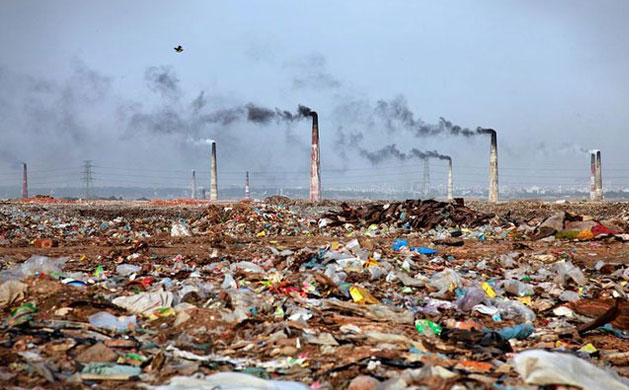
Environmental Pollution
August 09, 2022 · N.Ramakrishnan
What is Environmental Pollution?
Environmental pollution is defined as “the contamination of the physical and biological components of the earth/atmosphere system to such an extent that normal environmental processes are adversely affected.
Environmental pollution is increasing gradually and causing a serious impact on living organisms including humans. It can be reduced by microorganisms or plants that have biosynthetic pathways for the degradation or accumulation of environmental pollutants from soil and water. Lack of genetic components in natural microorganisms or plants lessens their ability to degrade or accumulate pollutants and hence is currently released at high rates. Recent advances in CRISPR-Cas9 technology have been used to edit the genome of microorganisms or plants in order to improve the degradation and accumulation efficiency to a higher rate for controlling environmental pollutants. We discuss recent developments in CRISPR-Cas9 based microorganisms and plant genome editing for bioremediation of environmental pollution in order to clean our environment for healthy animal life on earth.
1. What is Air Pollution? :-
Air pollution is contamination of the indoor or outdoor environment by any chemical, physical or biological agent that modifies the natural characteristics of the atmosphere. Household combustion devices, motor vehicles, industrial facilities and forest fires are common sources of air pollution. In other words
Air pollution is caused by solid and liquid particles and certain gases that are suspended in the air. These particles and gases can come from car and truck exhaust, factories, dust, pollen, mold spores, volcanoes and wildfires. The solid and liquid particles suspended in our air are called aerosols
The main causes of air pollution can be categorized by source:
- Mobile: Cars, buses, planes, trucks and trains.
- Stationary: Power plants, oil refineries, industrial facilities and factories.
- Area: Agricultural areas, cities and wood-burning fireplaces.
- Natural: Wind-blown dust, wildfires and volcanoes.

Pollutants Categorized as
I.Sulfur Oxides (SOX)
II.Nitrogen Oxides
III.Carbon Monoxide (CO)
IV.Carbon Dioxide
V.Volatile Organic Compounds
VI.Particulate Matter
VII. Mercury (HG in Gaseous Form)
VIII.Radio Active Pollutants
IX. Ammonia
2. Water Pollution
Water pollution is the contamination of water sources by substances which make the water unusable for drinking, cooking, cleaning, swimming, and other activities. Pollutants include chemicals, trash, bacteria, and parasites. All forms of pollution eventually make their way to water.
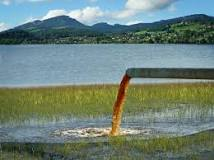
Water pollution is the release of substances into bodies of water that makes water unsafe for human use and disrupts aquatic ecosystems. Water pollution can be caused by a plethora of different contaminants, including toxic waste, petroleum, and disease-causing microorganisms.
3. Soil /Land Pollution
Land and soil pollution is largely the product of poor agricultural practices, inefficient irrigation, improper hazardous chemicals and nuclear waste management, and a range of industrial, military and extractive activities.
What is soil or land pollution?
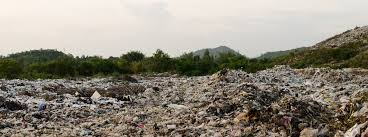
What is Land Pollution?
Land pollution refers to the deterioration of the earth's land surfaces, at and below ground level. The cause is the accumulation of solid and liquid waste materials that contaminate groundwater and soil.
What are the 3 main causes of soil pollution?

? Agriculture (excessive/improper use of pesticides)
? Excessive industrial activity.
? Poor management or inefficient disposal of waste.
Soil pollution causes a chain reaction. It alters soils' biodiversity, reduces soil organic matter and soils' capacity to act as a filter. It also contaminates the water stored in the soil and groundwater, and causes an imbalance of soil nutrients.
How does soil pollution affect us?
Soil pollution can also cause neuromuscular blockage as well as depression of the central nervous system, headaches, nausea, fatigue, eye irritation and skin rash. Soil does not need to be highly contaminated to be harmful to humans.
Who is affected by land pollution?
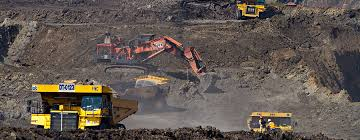
As land pollution and soil erosion progress, animals are forced to shift habitats and adapt to new conditions. As a result, some species are at risk of extinction. The potential effects of soil contamination on human health include breathing disorders, birth defects, skin diseases, and cancer.
How does soil pollution affect the economy?
Quantifiable economic losses due to soil pollution are loss of soil productivity and reduction of crop yields, contamination of food products and loss of marketability, reduction of biodiversity, and reduction of water quality.
What are the 5 examples of land pollution?
Here are some examples of land pollution:
- Litter on every corner or on the side of the road.
- Oil spills.
- Illegal dumping in natural habitats.
- Debris or damage caused from unsustainable logging practices.
- Pesticides and other farming chemicals.
- Nuclear accidents or radiation spills.
4. What is Noise Pollution

Noise pollution, unwanted or excessive sound that can have deleterious effects on human health, wildlife, and environmental quality.
What is noise pollution and its effects?
Sound can travel in the air and is produced by the vibration of objects. Regular exposure to a higher sound level that impacts humans and other living organisms is known as sound pollution. This article will help us understand what noise pollution is, the types of noise and pollution, and its causes and examples.

The Four types of noise
- Continuous noise. Continuous noise is exactly what it says on the tin: it's noise that is produced continuously, for example, by machinery that keeps running without interruption. ...
- Intermittent noise. ...
- Impulsive noise. ...
- Low-frequency noise. .
5. Radio Active Pollution
What is called radioactive pollution?
Radioactive Pollution is defined as the increase in the natural radiation levels caused by human activities. It is estimated that about 20% of radiation we are exposed to is due to human activities.
The most common disease that arises in people that have been exposed to radioactive pollution is cancer. Other dangerous diseases that might be brought on by exposure to radioactive waste include anaemia, leukaemia, haemorrhages, and cardiovascular diseases.
Radiation Pollution can be controlled and prevented at various levels, including the handling and treatment of radiation waste, the control and mitigation of nuclear accidents, as well as the control and minimization of personal exposure to radiation at an individual level.
What is the solution of radioactive pollution?
Disposal of low-level waste is straightforward and can be undertaken safely almost anywhere. Storage of used fuel is normally under water for at least five years and then often in dry storage. Deep geological disposal is widely agreed to be the best solution for final disposal of the most radioactive waste produced.

The main contributors are natural deposits of uranium, potassium and thorium which, in the process of natural decay, release small amounts of ionizing radiation. Uranium and thorium are “ubiquitous”, meaning they are found essentially everywhere.
6. Thermal pollution
Thermal pollution is any deviation from the natural temperature in a habitat and can range from elevated temperatures associated with industrial cooling activities to discharges of cold water into streams below large impoundments.
What is thermal pollution give an example?
Thermal pollution is the harmful release of heated liquid into a body of water or heat released into the air as a waste product of a business. An example of thermal pollution is water used for cooling in a power plant that runs into a nearby river and harms the river's ecosystem.
What is thermal pollution and its effect?
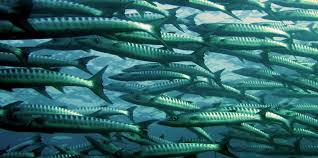
Simply put, thermal pollution comes from hot water or cold water being dumped into a body of water. Bodies of water naturally tend to dissipate the heat gained from warm currents, underwater hot springs, and from the sun
Explanation: Power plants are the main reasons behind growing thermal pollution. Because power plants use water as a cooling agent for cooling down their machines. This used water is in high temperature and it is released back to the water bodies and cause thermal pollution.

Experts suggest that the biggest cause of thermal pollution is most likely industrial machinery and power plants. Cool water from natural bodies of water is often pulled to cool machinery. While our natural bodies of water are helping industrial sites and power plants, the favor is not being returned.
UN Environment Programme (UNEP) established the Pollution, Health and Environment Unit to address the important issues and linkages between Environment and Health within the organization and with partner organizations and stakeholders.
Nairobi, Kenya
Headquartered in Nairobi, Kenya, UNEP works through its divisions as well as regional, liaison and out-posted offices and a growing network of collaborating centres of excellence.
How many countries are involved in UNEP?

UNEP works closely with its 193 Member States and representatives from civil society, businesses, and other major groups and stakeholders to address environmental challenges through the UN Environment Assembly, the world's highest-level decision-making body on the environment.

UNEP's acting executive director Joyce Msuya took office in November 2018, following the resignation of Erik Solheim. Prior to that appointment, she was UNEP's deputy executive director. Inger Andersen was appointed Executive Director of UNEP by UN secretary-general António Guterres in February 2019.
What is the aim of UNEP?
UNEP's mission is to provide leadership and encourage partnership in caring for the environment by inspiring, informing, and enabling nations and peoples to improve their quality of life without compromising that of future generations.
193 Member States
UNEP works closely with its 193 Member States and representatives from civil society, businesses, and other major groups and stakeholders to address environmental challenges through the UN Environment Assembly, the world's highest-level decision-making body on the environment.
What is the main purpose of UNEP?
UNEP's mission is to provide leadership and encourage partnership in caring for the environment by inspiring, informing, and enabling nations and peoples to improve their quality of life without compromising that of future generations.
Source :Google
Image source: Google
Quick Enquiry
To know more about Associated Chemicals feel free to send a message
 Our Sister Concerns
Our Sister Concerns 


Usefull Links
Get In Touch
Assochem Chambers, Bypass, Edapally,
Kochi-682024, Kerala, India.
Phones : +91 9495999349, +91 9388610189, +91 484 2339190, +91 484 2348028
E-mail : nsn@assochem.in, marketing@assochem.in, mail@assochem.in
Support

















